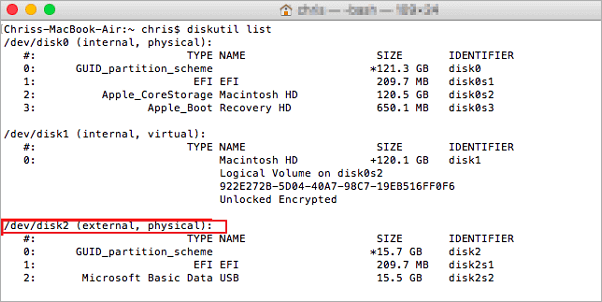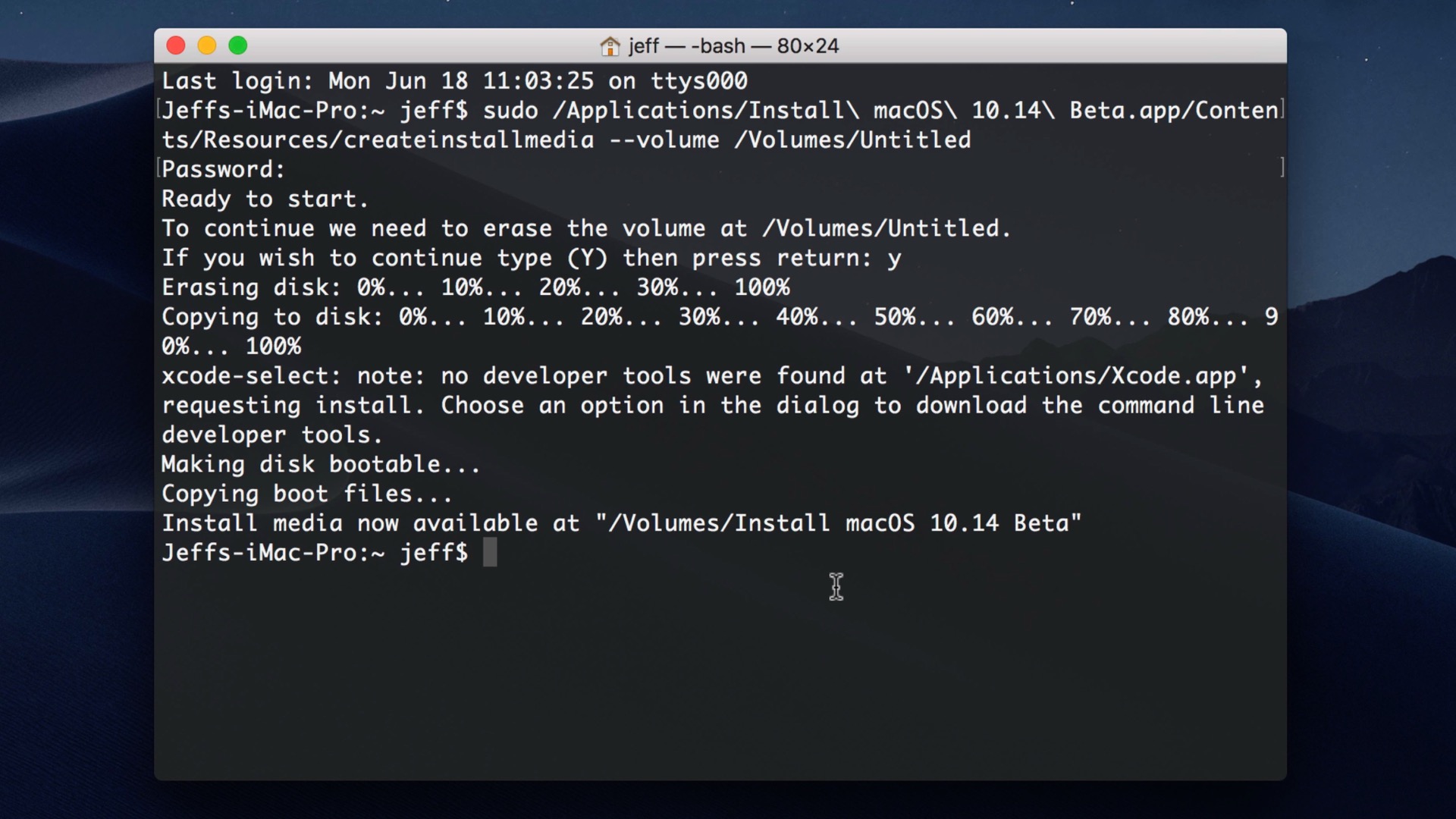These advanced steps are primarily for system administrators and others who are familiar with the command line. You don't need a bootable installer to upgrade macOS or reinstall macOS, but it can be useful when you want to install on multiple computers without downloading the installer each time.
At last my MacBook Pro 7.1 mid 2010 is creating a bootable external drive with “Install macOS High Sierra” from the App Store, so that I can upgrade the internal disk to WD Blue 250GB SSD. How-to: Make a bootable macOS drive. Use a USB flash drive (or other removable media) as a startup disk from which to install macOS. MacOS is distributed through the App Store which will download an installer app to the /Applications folder. If you run the macOS installer from that default location, the installer app will be deleted.
Download macOS
Find the appropriate download link in the upgrade instructions for each macOS version:
macOS Catalina, macOS Mojave, ormacOS High Sierra
Installers for each of these macOS versions download directly to your Applications folder as an app named Install macOS Catalina, Install macOS Mojave, or Install macOS High Sierra. If the installer opens after downloading, quit it without continuing installation. Important: To get the correct installer, download from a Mac that is using macOS Sierra 10.12.5 or later, or El Capitan 10.11.6. Enterprise administrators, please download from Apple, not a locally hosted software-update server.
OS X El Capitan
El Capitan downloads as a disk image. On a Mac that is compatible with El Capitan, open the disk image and run the installer within, named InstallMacOSX.pkg. It installs an app named Install OS X El Capitan into your Applications folder. You will create the bootable installer from this app, not from the disk image or .pkg installer.
Use the 'createinstallmedia' command in Terminal
- Connect the USB flash drive or other volume that you're using for the bootable installer. Make sure that it has at least 12GB of available storage and is formatted as Mac OS Extended.
- Open Terminal, which is in the Utilities folder of your Applications folder.
- Type or paste one of the following commands in Terminal. These assume that the installer is still in your Applications folder, and MyVolume is the name of the USB flash drive or other volume you're using. If it has a different name, replace
MyVolumein these commands with the name of your volume.
Catalina:*
Mojave:*
High Sierra:*
El Capitan: - Press Return after typing the command.
- When prompted, type your administrator password and press Return again. Terminal doesn't show any characters as you type your password.
- When prompted, type
Yto confirm that you want to erase the volume, then press Return. Terminal shows the progress as the bootable installer is created. - When Terminal says that it's done, the volume will have the same name as the installer you downloaded, such as Install macOS Catalina. You can now quit Terminal and eject the volume.
* If your Mac is using macOS Sierra or earlier, include the --applicationpath argument, similar to the way this argument is used in the command for El Capitan.
Use the bootable installer
After creating the bootable installer, follow these steps to use it:
- Plug the bootable installer into a compatible Mac.
- Use Startup Manager or Startup Disk preferences to select the bootable installer as the startup disk, then start up from it. Your Mac will start up to macOS Recovery.
Learn about selecting a startup disk, including what to do if your Mac doesn't start up from it. - Choose your language, if prompted.
- A bootable installer doesn't download macOS from the Internet, but it does require the Internet to get information specific to your Mac model, such as firmware updates. If you need to connect to a Wi-Fi network, use the Wi-Fi menu in the menu bar.
- Select Install macOS (or Install OS X) from the Utilities window, then click Continue and follow the onscreen instructions.
Learn more
For more information about the createinstallmedia command and the arguments that you can use with it, make sure that the macOS installer is in your Applications folder, then enter this path in Terminal:
Catalina:
Mojave:
High Sierra:
El Capitan:
Every user wants to “create bootable macOS Mojave installer with a flash drive or USB“. Somehow installing macOS Mojave becomes easy if you create a bootable installer of macOS Mojave. There are several reasons why we choose to create a bootable installer. First and foremost reason is you can easily complete clean install on mac. Besides this you can install macOS Mojave on multiple Macs, there is no need to download the installer again and again.
As it is bootable so you can use to troubleshoot devices for macOS Mojave. Check out, How to create MacOS Mojave installation Drive.
we are happy to help you, submit this Form, if your solution is not covered in this article.
how to make macOS Mojave Bootable install USB drive
Requirements:

Before starting the process, you will need to have few things for the proper functioning of bootable USB.
- A USB drive of 16GB or more is preferable, and if any data is stored in it, it will be removed when you make a bootable installer for macOS Mojave.
- Mac with App Store and good internet connection.
- macOS Mojave downloaded the file: “Install MacOS Mojave.dmg” from the Mac App Store stored in the path /Application/folder. Download This file from Developer Beta Downloader. Go to Download MacOS Mojave Developer Beta on Mac. and Don’t go for “Install screen” on Mac.
- Mac must be compatible with macOS Mojave 10.14.
How to make macOS Mojave 10.14 bootable installer USB drive.
Step 1: Connect the “USB drive” with Mac. – At Least 12 GB Storage.
Step 2: “Format the USB drive” with macOS “journaled extended format”. [If You Can’t Show PenDrive – Format Drive on Windows System First]
Step 3: Download macOS Mojave 10.14 version from the Mac App Store.
Step 4: As soon as download gets completed it will ask you to install, quit out and leave that macOS Mojave application is /Application/folder on your Mac.
Step 5: Now launch the “Terminal”. [Type Terminal in Spotlight Search [Command + Space]]
Step 6:Enter the command,
If necessary, you can replace UNTITLED in below command line with the name of USB drive name.
Install MacOS Mojave Public Command:-

Command For Bootable Mac Os Drive Icons
sudo /Applications/Install macOS Mojave.app/Contents/Resources/createinstallmedia –volume /Volumes/Untitled — /Applications/Install macOS Mojave.app
Install MacOS Mojave Developer Beta Command:- [For Developer]
macOS Mojave downloaded the file: “Install MacOS Mojave Beta.dmg” from the Mac App Store stored in the path /Application/folder. Download This file from Developer Beta Downloader. Go to Download MacOS Mojave Developer Beta on Mac. and Don’t go for “Install screen” on Mac. Run command Below in terminal
sudo /Applications/Install macOSMojave Beta.app/Contents/Resources/createinstallmedia –volume /Volumes/Untitled –applicationpath /Applications/Install macOS Mojave Beta.app
Step 7: Click return key and then also enter the administrator password.
Bootable Macos Sierra Usb
Now Type “Y” to move on next steps for booting your Drive.
Step 8: The process of macOS Mojave installer will begin, and it will take some time to finish.
Once the USB drive is ready, then you can use it on any other bootable macOS drive. Alternatively, restart the Mac with the attached bootable USB drive installer and then install macOS Mojave in your Mac. There are various options available to use macOS Mojave USB installer drive.
While installing of you are getting an error message like command not found then it is likely possible that you have entered wrong code. And also check that the path is same as mentioned above /Application/folder.
NOTE: This process is available for macOS Mojave developer version only, not for the macOS Mojave public.
How to boot from macOS Mojave USB Install Drive
Step 1: Connect the USB drive to the Mac.
Step 2: Restart the Mac and press and hold the Option key.
Premium Support is Free Now
We are happy to help you! Follow the next Step if Your Solution is not in this article, Submit this form without Sign Up, We will revert back to you via Personal Mail. In Form, Please Use the Description field to Mention our reference Webpage URL which you visited and Describe your problem in detail if possible. We covered your iPhone 11 Pro, iPhone 11 Pro Max, iPhone 11, iPhone 8(Plus), iPhone 7(Plus), iPhone 6S(Plus), iPhone 6(Plus), iPhone SE, SE 2(2020), iPhone 5S, iPhone 5, iPad All Generation, iPad Pro All Models, MacOS Catalina or Earlier MacOS for iMac, Mac Mini, MacBook Pro, WatchOS 6 & Earlier on Apple Watch 5/4/3/2/1, Apple TV. You can also mention iOS/iPadOS/MacOS. To be Continued...
Step 3: From the menu, select install macOS10.14
Bootable Installer For Macos

Step 4: Now follow the prompts and install the macOS 10.14 Mojave on your mac.
Macos Bootable Usb On Windows
That’s it!